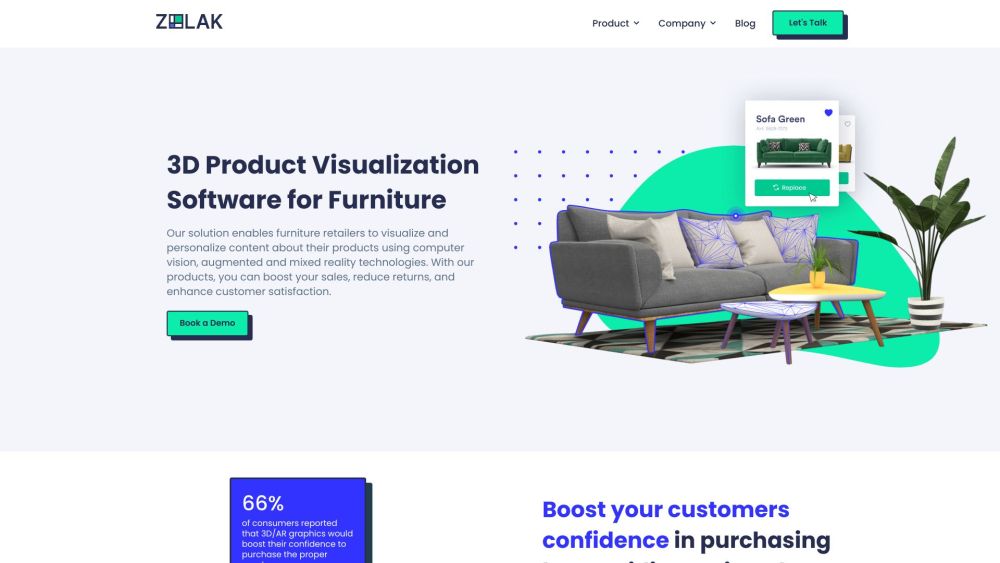Common Questions About Zolak
What is Zolak?
Zolak is an AI-driven 3D furniture visualizer that enables retailers to offer lifelike, interactive product previews. It uses machine learning and spatial computing to help customers visualize furniture in their own environments with precision.
How do I implement Zolak on my website?
Zolak integrates easily into existing e-commerce systems via API or plugin. Once installed, retailers can activate 3D models, AR previews, and customization options across product pages with minimal development effort.
What is a 3D product visualizer?
A 3D product visualizer renders items in three dimensions, allowing users to rotate, zoom, and explore products from every angle—providing a tactile-like experience in a digital space.
What is AR 3D product visualization?
AR 3D visualization overlays digital furniture models into real-world environments using smartphone cameras. Users can walk around virtual pieces placed in their rooms, seeing how they fit and look under actual lighting and layout conditions.
Why is product visualization important for ecommerce?
In online shopping, customers can't touch or test products. 3D visualization fills this gap by offering depth, scale, and interaction—leading to greater confidence, fewer doubts, and more completed purchases.
What are the benefits of 3D visualization in ecommerce?
It enhances product understanding, reduces uncertainty, lowers return rates, increases engagement time, supports remote selling, and improves overall user satisfaction—all while reducing reliance on physical inventory and photo shoots.
How are 3D visualizations created for online stores?
Using high-fidelity 3D modeling, texture mapping, lighting simulation, and AI-based scaling algorithms, Zolak generates accurate digital twins of furniture. These models are optimized for fast loading and real-time interaction across devices.
Can CAD files be used in 3D visualization tools?
Yes—Zolak supports CAD integration, enabling manufacturers to convert technical designs into interactive consumer-facing visualizations, ensuring accuracy from blueprint to browser.
What advantages does 3D visualization bring to furniture businesses?
Businesses gain higher conversion rates, improved customer trust, increased average basket size, lower operational costs, and a competitive edge in digital retail by offering experiential shopping.
How do visual effects enhance product presentation?
Realistic shadows, ambient lighting, material textures, and reflections make digital furniture appear authentic. These visual cues help buyers assess quality, style, and compatibility with their space.
What are some real-world examples of 3D product visualization?
Examples include 360° spin views, color swatch changers, fabric selectors, room planner tools, AR room placement, and build-your-own furniture configurators.
How has product visualization evolved recently?
Driven by AI, cloud rendering, and mobile AR, today’s visualization tools are faster, smarter, and more accessible. They now offer real-time personalization, automatic room scanning, and hyper-realistic graphics—transforming digital commerce into an immersive journey.
